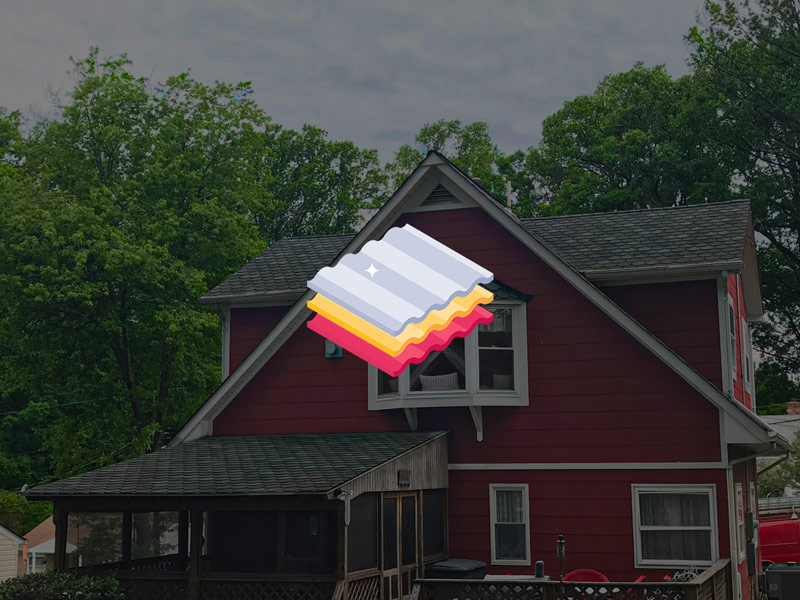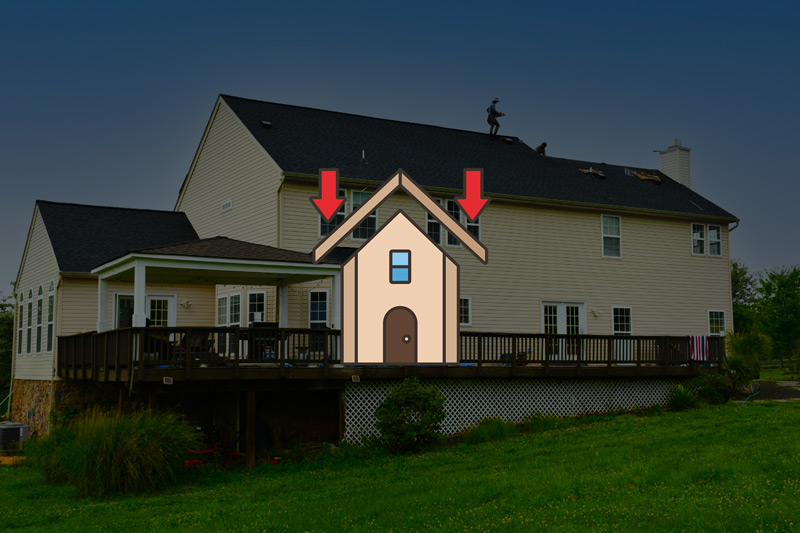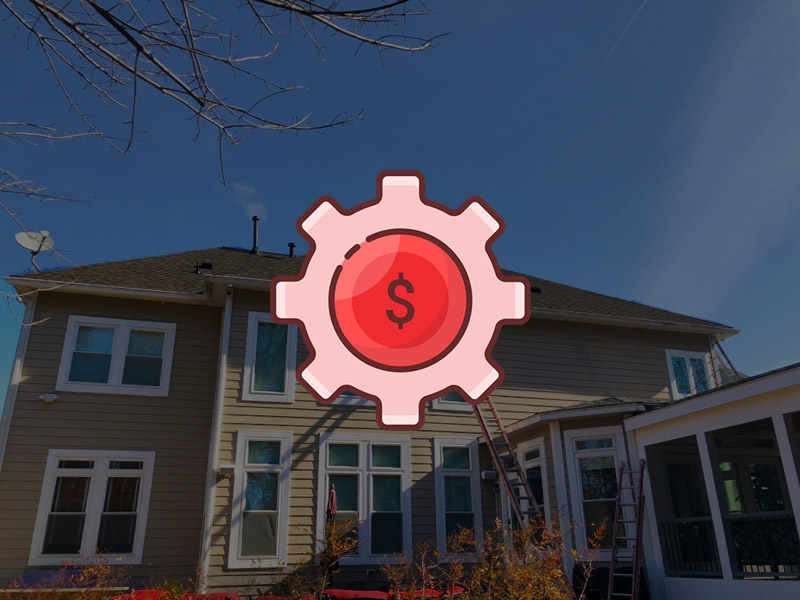TPO vs. PVC Roofing Cost: A Comprehensive Comparison
Explore research behind TPO vs. PVC Roofing. TPO (Thermoplastic Olefin) and PVC (Polyvinyl Chloride) are two common types of single-ply roofing membranes used in both residential and commercial applications. TPO roofing consists of a blend of rubber and plastic materials, while PVC roofing is made of a durable, synthetic polymer. Both offer distinct advantages and have unique characteristics that make them suitable for different roofing projects.

Understanding TPO Roofing
Definition and Composition of TPO (Thermoplastic Olefin)
TPO, short for Thermoplastic Olefin, is a single-ply roofing membrane that has gained popularity in the construction industry. It is composed of a blend of rubber and plastic materials, typically reinforced with polyester or fiberglass. TPO roofing combines the durability of rubber with the heat-weldable properties of plastic, resulting in a versatile and resilient roofing system.
Advantages and Benefits of TPO Roofing
- Energy Efficiency: TPO roofs are known for their reflective properties, which help reduce heat absorption. This can lead to lower cooling costs during hot summer months.
- Durability: TPO roofing exhibits excellent resistance to UV rays, ozone, and chemical exposure, making it highly durable and suitable for various climates.
- Cost-Effective: TPO roofing materials often come at a lower price point compared to other roofing options, making it an attractive choice for budget-conscious individuals or businesses.
- Ease of Installation: TPO membranes are lightweight and flexible, allowing for relatively straightforward installation. This can help reduce labor costs and installation time.
Analyzing TPO Roofing Expenses
When considering the expenses associated with TPO roofing, it’s essential to factor in various cost components. These include the material costs, installation labor charges, and any additional expenses specific to the project, such as insulation or necessary accessories. By assessing these elements thoroughly, property owners can make an informed decision and evaluate the cost-effectiveness of TPO roofing in their specific circumstances.

Exploring PVC Roofing
Definition and Composition of PVC (Polyvinyl Chloride)
PVC, or Polyvinyl Chloride, is a popular roofing material known for its strength and durability. It consists of a synthetic polymer that is reinforced with various additives and modifiers to enhance its performance. PVC roofing membranes are engineered to withstand harsh weather conditions, UV radiation, and chemicals, making them suitable for a wide range of applications.
Advantages and Benefits of PVC Roofing
Exceptional Weather Resistance: PVC roofing exhibits excellent resistance to extreme temperatures, high winds, and heavy rainfall. It effectively repels water and prevents leaks, providing reliable protection for the underlying structure.
- Long Lifespan: PVC roofs are renowned for their longevity, with an average lifespan of 20-30 years. This durability translates into long-term cost savings, as PVC roofs require fewer repairs and replacements over their lifespan.
- Energy Efficiency: PVC roofing membranes often feature reflective properties, reducing heat absorption and lowering cooling costs. This energy efficiency can contribute to environmental sustainability and potentially earn LEED certification points for green building projects.
- Low Maintenance: PVC roofs require minimal maintenance, making them an attractive choice for property owners. Occasional inspections and routine cleaning are generally sufficient to keep the roof in optimal condition.
Evaluating PVC Roofing Costs
To evaluate the costs associated with PVC roofing, several factors should be considered. These include material costs, installation expenses, and any additional requirements specific to the project, such as insulation or necessary accessories. Assessing these costs comprehensively enables property owners to make informed decisions regarding PVC roofing and its financial feasibility for their specific needs.

Cost Factors Comparison
Expenses for TPO Roofing
When considering the installation expenses for TPO roofing, several cost factors come into play.
- Material Costs: TPO roofing materials vary in price depending on the brand, thickness, and quality. It is essential to select a reliable TPO membrane that suits your specific requirements while keeping your budget in mind.
- Labor Costs: Hiring professional roofers for TPO installation ensures a proper and secure application. The labor costs associated with TPO roofing depend on factors such as the size of the project, complexity of the roof design, and local labor rates.
- Additional Expenses: Besides the primary materials and labor, there might be additional expenses to consider. These can include accessories like flashing, adhesives, and seam tapes. Additionally, insulation materials may be required to enhance energy efficiency and minimize heat loss.
Installation Expenses for PVC Roofing
Similar to TPO roofing, evaluating the installation expenses for PVC roofing involves various cost considerations.
- Material Costs: PVC roofing materials come in different grades and thicknesses, affecting their pricing. Researching and selecting a reputable PVC membrane within your budget is crucial.
- Labor Costs: Professional installation by experienced roofers ensures the proper installation of PVC roofing. Labor costs for PVC roofing depend on factors such as the complexity of the roof, roof size, and local labor rates.
- Additional Expenses: Alongside the primary materials and labor, additional expenses may arise. These can include accessories like fasteners, sealants, and edge trims. Insulation materials might also be necessary to optimize energy efficiency and provide insulation value.
Comparing the Financial Aspects of TPO and PVC Roofing
When comparing the financial aspects of TPO and PVC roofing, it is crucial to assess the overall costs of both options. Consider the material costs, labor charges, and additional expenses associated with each roofing system. Evaluating these factors allows you to make an informed decision based on your budget, specific requirements, and long-term financial considerations.

Lifespan and Maintenance Considerations
Average Lifespan of TPO Roofing
The average lifespan of TPO roofing typically ranges between 15 to 30 years, depending on various factors such as climate, installation quality, maintenance, and roof design. With proper installation and regular maintenance, TPO roofs can provide long-lasting protection for residential and commercial structures. It’s important to note that the quality of the TPO membrane, manufacturer warranties, and professional installation play significant roles in determining the roof’s longevity.
Average Lifespan of PVC Roofing
PVC roofing boasts an average lifespan of 20 to 30 years, making it a durable and reliable choice for many property owners. Similar to TPO roofing, the actual lifespan can be influenced by factors such as climate, installation quality, and maintenance practices. High-quality PVC membranes, when properly installed and maintained, can offer exceptional longevity and protection against various environmental factors.
Maintenance Requirements and Associated Costs
Both TPO and PVC roofs require regular maintenance to ensure their longevity and optimal performance. Maintenance tasks include inspecting for damage, cleaning debris, checking for punctures or leaks, and addressing any issues promptly. Routine inspections and maintenance help identify potential problems early on and prevent costly repairs or premature replacements.
The associated costs for maintenance are generally minimal compared to the potential expenses of neglecting upkeep. Regular maintenance can extend the lifespan of the roofing system and minimize the risk of major issues, ultimately saving on repair costs and preserving the overall investment.
Longevity and Upkeep: TPO vs. PVC Roofs
When comparing the longevity and maintenance requirements of TPO and PVC roofs, it is essential to consider several factors. TPO roofing offers a respectable lifespan, while PVC roofing often provides an even longer service life. However, the actual lifespan can vary based on installation quality, environmental factors, and maintenance practices.
Both roofing systems benefit from routine inspections, cleaning, and proactive maintenance to ensure their optimal performance. By adhering to recommended maintenance practices, property owners can maximize the lifespan of their TPO or PVC roofs and avoid potential issues that may lead to costly repairs or premature replacements.

Factors Influencing Roof Replacement
Signs Indicating a Roof Replacement is Necessary
Determining when to replace a roof involves recognizing certain signs that indicate it may be nearing the end of its lifespan. These signs include significant roof leaks, widespread damage, multiple missing or damaged shingles or membranes, excessive granule loss, or visible sagging. If you notice any of these signs, it is crucial to consider a roof replacement to avoid further damage to the structure and potential interior water damage.
Assessing the Condition of an Existing Roof
Regular roof inspections are essential for assessing the condition of an existing roof. A professional roofer can examine the roof’s integrity, identify potential issues, and provide an accurate assessment of its remaining lifespan. Factors such as the age of the roof, its maintenance history, and the severity of existing damage are considered during the assessment process.
Determining the Ideal Time for a Roof Replacement
Determining the ideal time for a roof replacement involves considering various factors. These include the age of the roof, its current condition, the cost-effectiveness of repairs versus replacement, and the estimated remaining lifespan. Additionally, environmental factors, such as severe weather patterns or geographic location, can influence the decision-making process. Consulting with a professional roofing contractor is highly recommended to make an informed decision based on the specific circumstances.
Replacing Roofs: When and Why?
Knowing when and why to replace a roof is crucial for maintaining the integrity of a building. Roofs that exhibit severe damage, extensive wear and tear, or have surpassed their expected lifespan should be replaced to ensure proper protection and avoid potential structural issues. Timely roof replacement can prevent costly repairs due to water damage, preserve the property’s value, and provide peace of mind to property owners.
View More Articles
Please Share!










